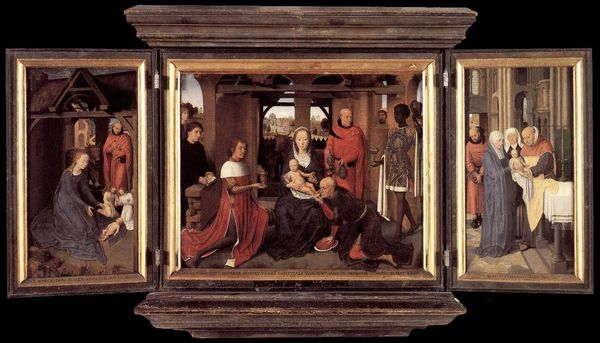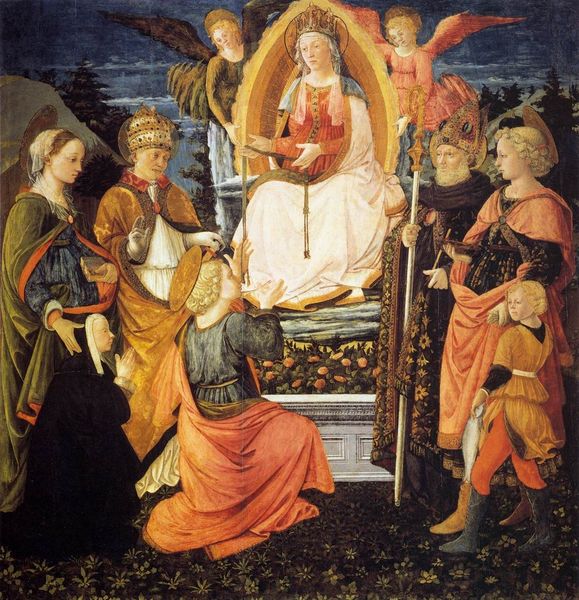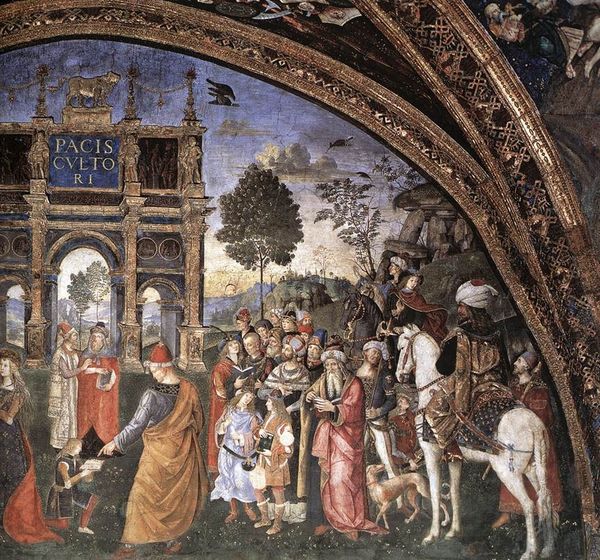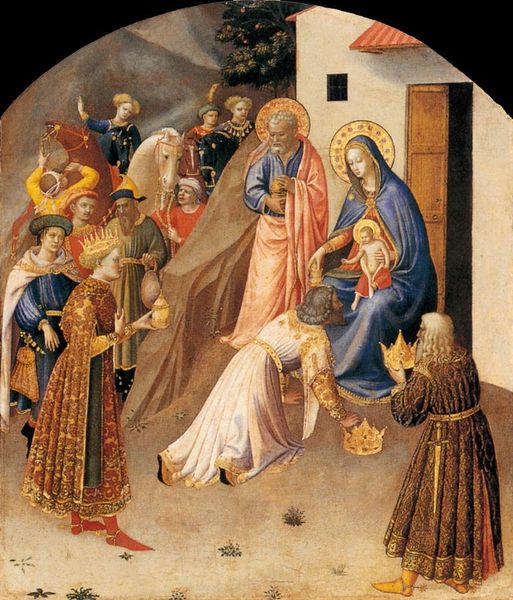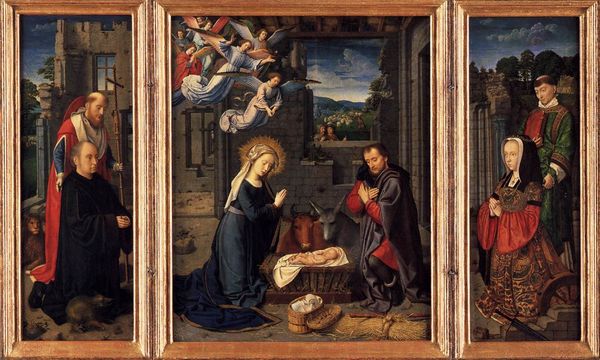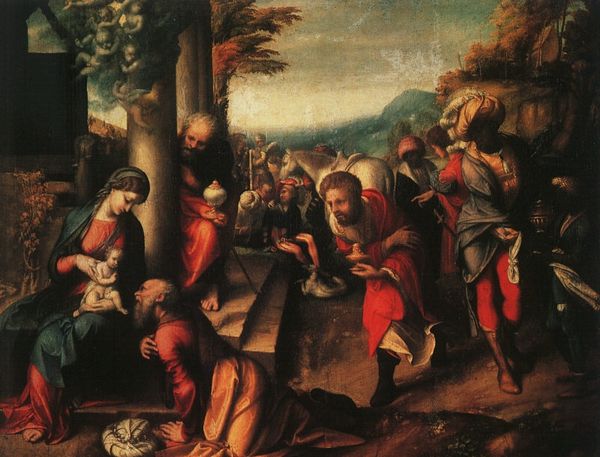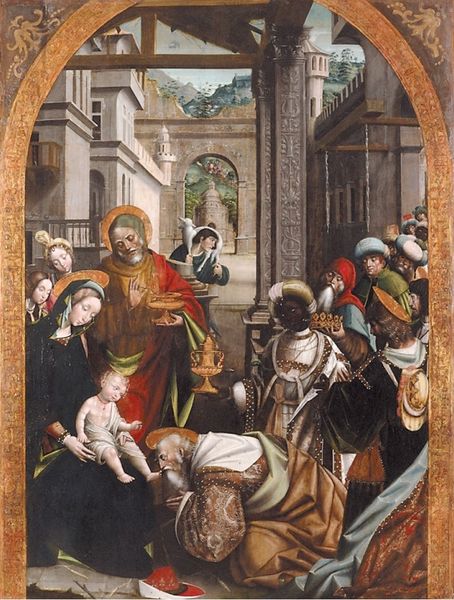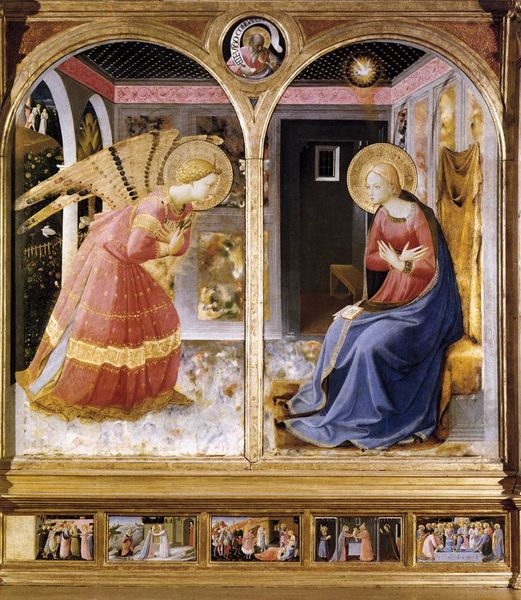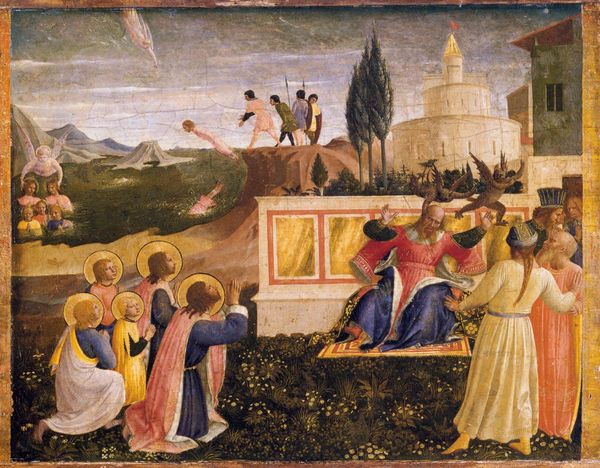
Adoration of the Kings (Epiphany) 1476
0:00
0:00
pietroperugino
National Gallery of Umbria (Palazzo dei Priori), Perugia, Italy
tempera, painting, oil-paint
#
portrait
#
allegory
#
brown tone
#
narrative-art
#
tempera
#
painting
#
oil-paint
#
landscape
#
perspective
#
figuration
#
earthy tone
#
christianity
#
history-painting
#
academic-art
#
italian-renaissance
#
early-renaissance
#
portrait art
Copyright: Public domain
Curator: The artwork before us is Pietro Perugino's "Adoration of the Kings (Epiphany)," a tempera on wood panel painted around 1476, now housed in the National Gallery of Umbria, Italy. Editor: It’s surprisingly calming. The colours are so muted and balanced, especially considering how crowded the composition is with so many figures. Almost dreamlike. Curator: Perugino was masterful in crafting emotionally resonant images. In Renaissance depictions of the Epiphany, we repeatedly encounter the convergence of power, wisdom, and divinity in one focal point, often carrying with it allusions of social change and geopolitical awareness. How does the landscape in the background strike you? Editor: That wide-open landscape gives the scene such a different feeling. It pushes back against the perceived claustrophobia of religious narratives. I see those serene backgrounds less as just landscape and more as metaphors of social possibility… a wider space for movement and reform. Is it any accident that those landscapes get smaller as the power of the Catholic church swells again in later painting? Curator: Interesting point. These subtle backgrounds indeed offer alternative horizons of what's possible. I also notice Perugino has taken symbolic cues, embedding cultural and religious motifs through details, colors, gestures… It is almost a semiotic game for those initiated in reading Christian imageries! Editor: Speaking of details, look at how the three kings are depicted: The arrangement suggests diverse cultures coming together, a radical point to stress given the political upheavals and cultural fragmentation of the era, with an open invitation of equality. Do you feel it aligns with contemporary theories regarding power structures? Curator: Definitely. I am always touched by the cultural significance ascribed to gold as a recurring symbolic marker across civilizations—from ancient Egypt to Byzantium and Renaissance Europe, signalling power, value, or divinity. But ultimately, it reflects our continued need for a vocabulary through precious objects. Editor: Precisely! The artwork feels almost ahead of its time with how clearly it lays bare those recurring needs of societies worldwide to construct shared vocabularies around symbolism, identity and inclusion, and power—things we are still very much struggling with in the 21st century.
Comments
No comments
Be the first to comment and join the conversation on the ultimate creative platform.

